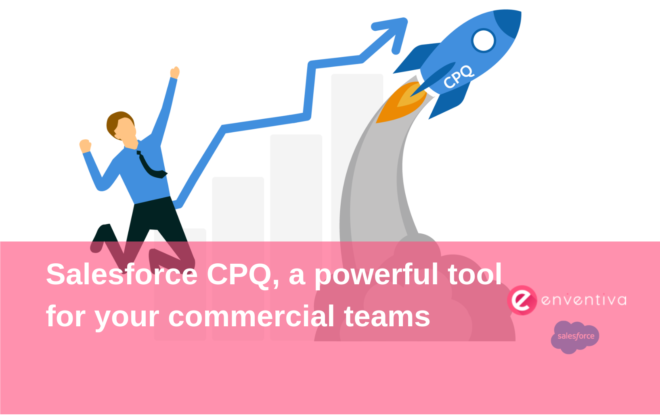7 tips for a successful implementation of Salesforce CRM
Salesforce is reputed worldwide for its cloud-based CRM software. The vendor has become a leader of the market, thanks to a cutting-edge and easy-to-use technology. Today, Salesforce has a very complete offering, which covers the full marketing and sales lifecycle.
However, despite the various out-of-the box features provided by the Salesforce platform, implementing such a solution requires some preparation. In order to succeed, companies should pay attention to a few aspects. In this article, Enventiva’s experts highlight 7 best practices that will help companies succeed in their Salesforce initiatives.
Find a strong sponsorship
Implementing a CRM solution is a strategic project, that can have a direct impact on your company revenues. For this reason, a strong support of the management team is essential. Choosing a C-level sponsor is key to give the project the best chances of success. A high-level sponsorship helps both to get sufficient budget and to ensure the availability of key resources. A support from the top also accelerates the adoption of the new system.
Choose the right people
Many outcomes depend on the project team, such as the rapidity of deployment and the quality of the deliverables. This is why companies should pay special attention to the people who will work on their Salesforce project. Often, they don’t have enough internal resources, or their employees don’t have the required technical level. In such cases, companies need a trusted partner.
One common mistake companies make is choosing their partner only according to financial criteria. Yes, these aspects do count, but they are not the only ones. Other factors play a key role to succeed, such as :
- the partner location: working with a close-proximity partner, whose experts you can meet in person, can make a real difference during the project, and after.
- the technical skills: choosing a partner with a proven expertise into Salesforce solutions, and whose teams have worked on various Salesforce projects, is a major guarantee of success.
- a knowledge of your industry: each sector has its specificities. A partner with experience in your market will better understand your requirements. He will build a solution truly tailored to your needs, because “one size doesn’t fit all”.
Once a company has found the right partner, it has done half the work. However, the project sponsors should name a few in-house people to work with the partner on the implementation. The best strategy is to select business representatives with a good understanding of the CRM processes. These people must be fully available, especially in the design steps of the project. They must be motivated, with a clear commitment to the project, because you need digital champions inside your organisation.
Choose the right methodology
For Salesforce initiatives, we strongly recommend agile methodologies, such as Scrum. Starting simple, on a well-defined perimeter, is the best way to deliver an operational CRM system rapidly. However, in some cases customers may need more planning and preparation before the implementation starts. For them, Enventiva has developed an hybrid approach, between traditional waterfall and agile. To learn more about how we reconcile these methodologies, bringing the best of the two worlds to our customers, contact us.
Be ready to redesign your existing CRM processes
Salesforce CRM encompasses most of the market best practices. In many cases, it will be easier, quicker and less expensive for a company to adapt its existing processes to the solution, rather than the opposite. Adherence to the standard is the one condition if you want to leverage the full capabilities of the Salesforce platform (including the ones planned on the roadmap). It is recommended by the vendor itself. If needed, your partner can help you distinguish real value-added specificities tied to your core business from the ones that are just inherited from the past.
Prepare your data
Compared to other IT projects, implementing Salesforce do not demand a lot of technical prerequisites, thanks to the flexibility of the cloud. However, data preparation is one of them, and one not to be neglected. In today digital world, data is a key asset. Migrating your data from your existing systems to your Salesforce platform is a critical and challenging step, that often causes delays during projects. Don’t underestimate the work required to prepare and clean the data! The earlier you start, the quicker you will get the expected outcomes and see a return on investment.
Involve the business users early
The adoption of the solution by end-users is a main factor of success. Everything you can do to encourage them learn the solution is helpful. The earlier they become familiar with Salesforce processes and tools, the more they will use them. A good idea is to start the deployment with features focused on their pain points. This way, they will quickly see the value of the solution, and become its first advocates.
Define a continuous improvement process
When your Salesforce system goes live, it is not an end. It’s a beginning. Once you have a first version deployed, you can start to improve it, based on your users feedback and the evolution of your business. The true value of Salesforce platform lies in its flexibility. The vendor is continuously delivering new useful features, that you may look at. What is really attractive with a cloud-based CRM system like Salesforces is that you don’t need to anticipate all and every use case. You are free to deploy a feature where and when you need it.






